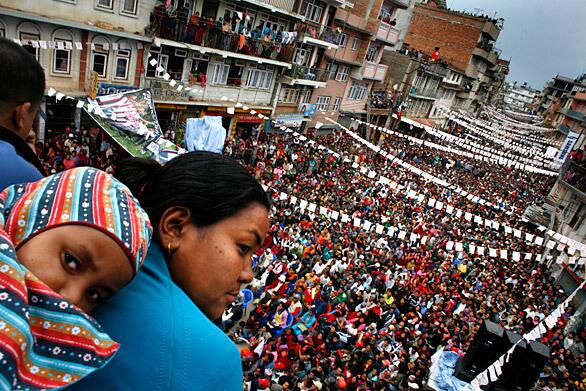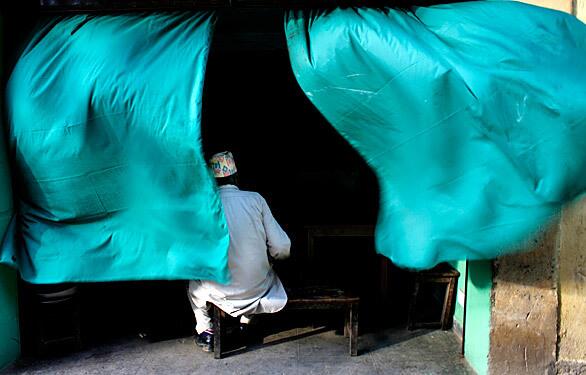
A polling station is readied for voters in the capital city of Kathmandu. The elections in Nepal were a watershed event as the country struggled to move beyond its violent past as it dismantled the monarchy and took tentative steps toward being a democracy with the Maoist party leading the way. (Michael Robinson Chavez / Los Angeles Times)
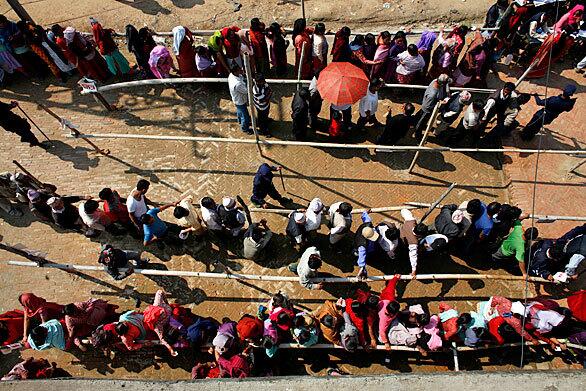
Nepalis voted in an historical election to install a Constituent Assembly to write a new constitution transforming the Himalayan nation from a monarchy to a republic. Turnout was high as villages turned out en masse to vote with lines forming early in the morning. (Michael Robinson Chavez / Los Angeles Times)
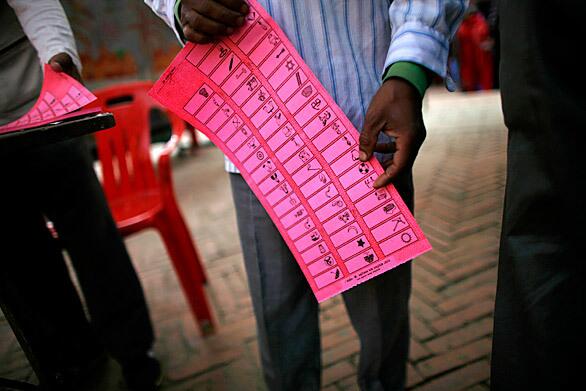
Ballots featured a symbol for each of the over 50 political parties that participated in the historical vote. Due to Nepal’s high illiteracy rate the symbols were the only indication featured as to which party was which. (Michael Robinson Chavez / Los Angeles Times)
Advertisement
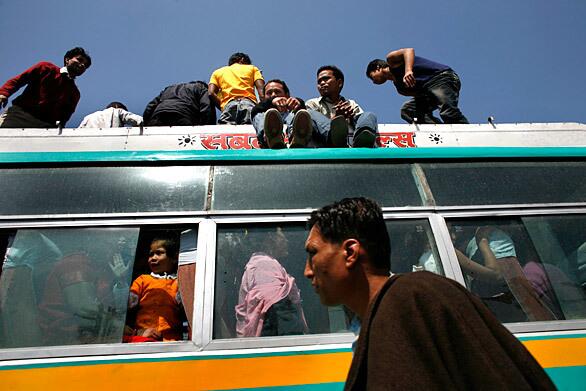
The turnout for the historical election was high even though citizens had to vote in their hometowns. That strict regulation resulted in overcrowded buses making the long journeys to outlying towns and villages throughout the Himalayan nation. (Michael Robinson Chavez / Los Angeles Times)
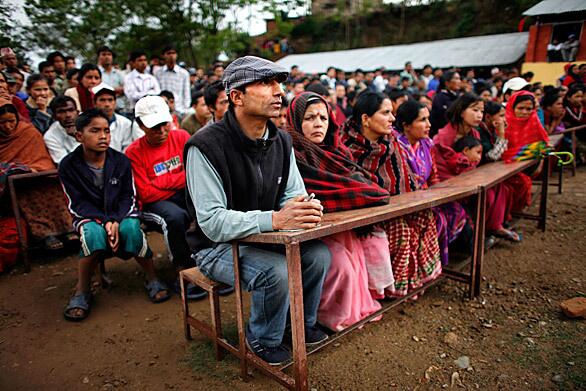
Seated at school desks at an elementary school on the outskirts of Kathmandu supporters of the Maoist party attend a rally prior to the election. The Maoists after waging a violent insurgency for 10 years took the majoriy of seats in the new constitutional assembly. (Michael Robinson Chavez / Los Angeles Times)
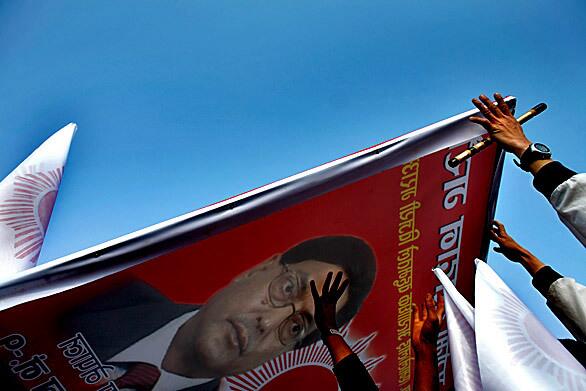
Supporters raise the poster of a candidate running for a communist party that is at odds with the Maoist party. Rallies and events reached a fever pitch in the days preceding the election. (Michael Robinson Chavez / Los Angeles Times)
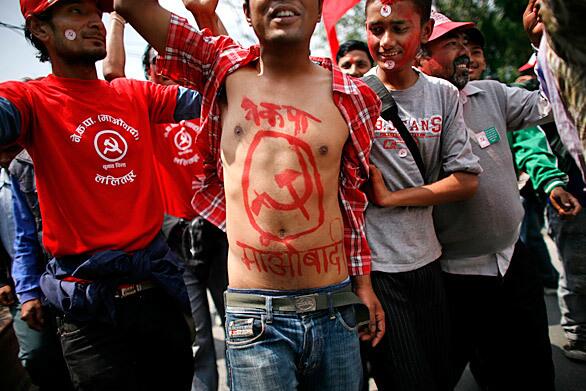
Maoist party members celebrate their party’s victory in the elections. (Michael Robinson Chavez / Los Angeles Times)
Advertisement
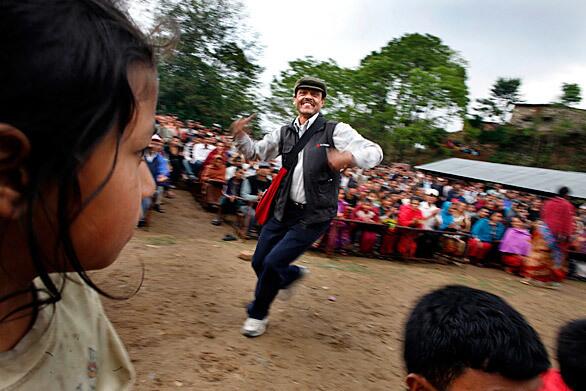
A Maoist party member joyously dances during a rally prior to the elections. (Michael Robinson Chavez / Los Angeles Times)
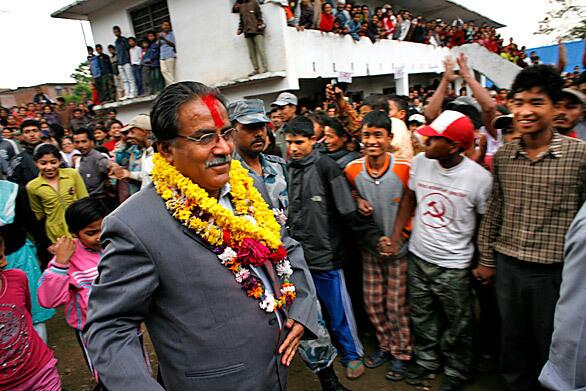
Prachanda (known by one name), the head of the Maoist party, arrives at a rally at a school outside of Kathmandu. For over a decade Pachandra led an insurgency that battled the monarchy of Nepal for power. He finally persevered at the ballot box. (Michael Robinson Chavez / Los Angeles Times)
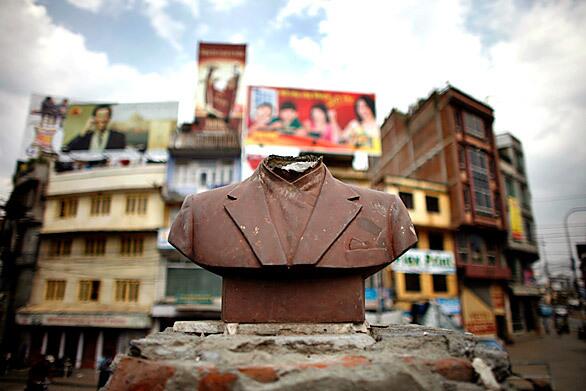
A bust of one of Nepal’s last kings lies defaced in a Kahtmandu plaza after election results brought the Maoist party to power in a new Constituent Assembly. Nepalis hope they can put their violent past behind them and embark on a bizarre democratic experiment with Maoists at the helm. (Michael Robinson Chavez / Los Angeles Times)
